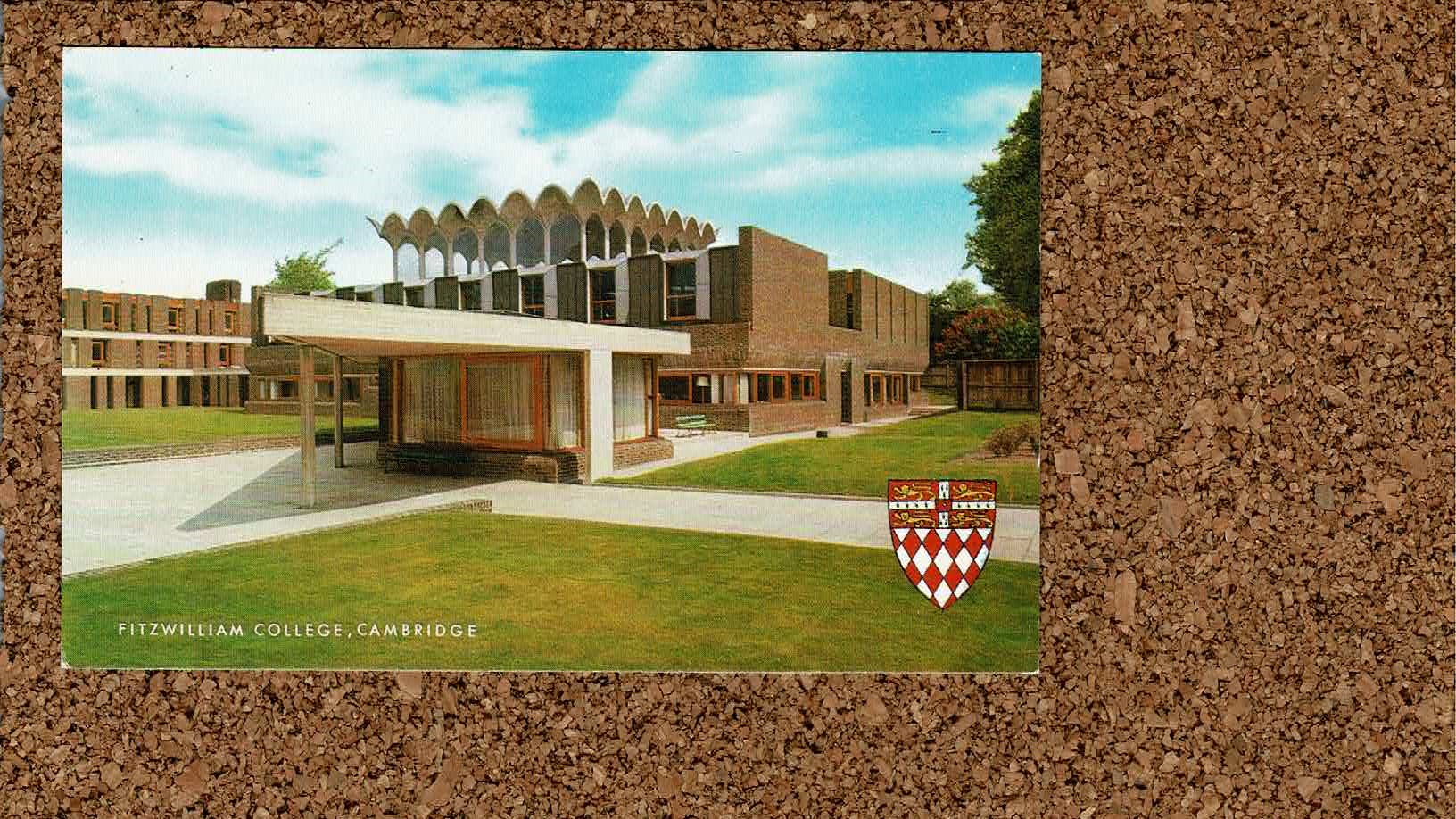Greetings from Cambridge – possibly the coldest university city in which your correspondent has stayed.
We’re taking a visit today to Fitzwilliam College, all 60’s modernist architecture with fabulous angles and curves. But we’ll be talking about access to university studies, and we’ll be going back more than 150 years.
Access and Participation, old school
In 1869 the University of Cambridge acted to address a problem – the costs of enrolling at a college meant that many potential students were priced out of the University. The Sun (no, not the same one as today’s) of 28 June 1869 sets out what they did:
NON-COLLEGIATE STUDENTS. A board has been appointed for regulating the admission of non-collegiate students to the University of Cambridge, the Master of St John’s College being the chairman. Students may be admitted members of the university without being members of any college. Such students will be entitled to be examined and admitted to degrees, in the same manner and with the same status as students who are members of colleges. They will keep terms by residing in Cambridge, and will be required to pay due obedience to all academical regulations. Each applicant for admission must produce a testimonial as to character, and a reference to two respectable persons. He [sic] must make a written report, when required, as to the place of religious worship he attends and as to the studies he is pursuing. He must pay the ordinary fees. Noncollegiate students will be admitted to the university library and museums, and to the Professors’ lectures, under the same regulations as the other students, and will be able to compete for university scholarships in the same manner.
The first eight non-collegiate students were admitted in 1869, and it proved to be a popular arrangement. By 1874 there were eighty-four such students, including one university prize-winner. And, critically, a room in which they could meet. This was open weekdays 11-6, and Sundays 3-4; it had a committee appointed by the students. And, for those who paid the 1s 6d subscription, took a range of newspapers and journals, including Nature, Punch and the Field.
The University had recognised that students needed some non-collegiate infrastructure to support them. This support was expanded in 1887, when the University bought Fitzwilliam Hall. Located near the Fitzwilliam Museum, this provided non-collegiate students with a base; it also provided a venue for some teaching. In 1924, Fitzwilliam Hall became Fitzwilliam House.
The popularity of the non-collegiate approach continued to grow: over 300 such students were enrolled in 1920. But after WW2, state funding for students was more accessible and the no-collegiate route less significant. In 1944, the University had decided not to close Fitzwilliam House, but to re-site and enlarge it with a view to it becoming a College. By 1960 funds had been raised, and the University had purchased land and appointed an architect.
The architect was the noted modernist Sir Denys Lasdun – who also designed buildings for the University of East Anglia, SOAS and the University of London Institute of Education. The buildings were completed by 1963, and Fitzwilliam House moved to its current site – the one shown on the card. In 1966 it was awarded a Royal Charter, and Fitzwilliam College was admitted as a College of the University of Cambridge.
Starter for Ten
Fitzwilliam is one of eight Cambridge Colleges to have won University Challenge, beating Gonville and Caius College Cambridge in the final in 1973. Alumnus David Starkey also represented Fitzwilliam in University Challenge, but was not part of the winning team.














surely not [sic] – wouldn’t all students then have been men?